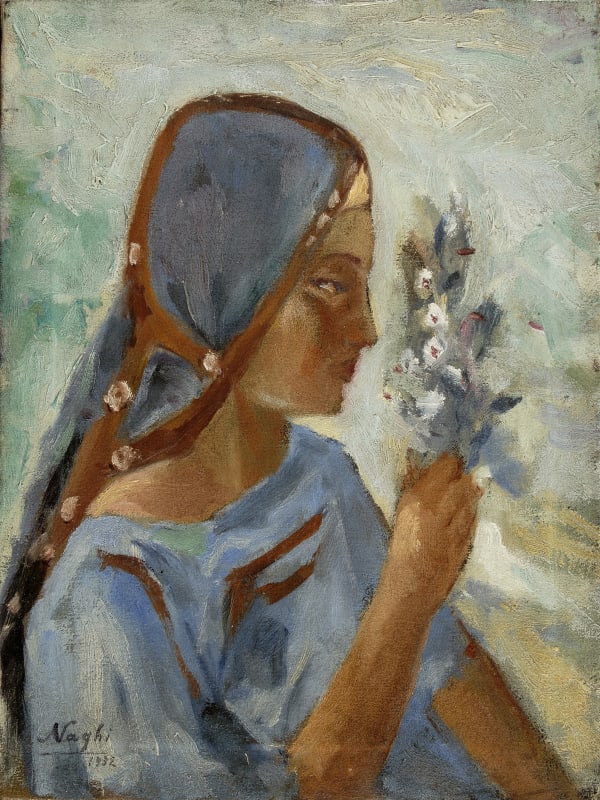In 1935, Naghi established his Alexandria Atelier and began producing what are considered to be his masterpieces; The Medicine of the Egyptians, Moses’s Medicine and In the Village.
Mohamed Naghi was born in 1888, into an aristocratic family from Alexandria, known for their sophisticated cultural background. He finished his secondary education in Alexandria at the Swiss School and was a contemporary of the acclaimed Italian writer Ungaretti. He studied law at Lyon University in France and then art at the Academic School of Plastic Arts in Florence, Italy. Upon his return to Egypt he become fully acquainted with the monumental bas-relief of the pharaonic temples in Luxor, consequently becoming obsessed with them artistically.
During his life, Naghi lived in Thebes, Brazil and all over Europe. In 1918 he spent several months in Giverny in the company of Claude Monet. In 1919 Naghi established his studio in Darb El Labana in Cairo, then in 1935 he established his Alexandria Atelier and began producing monumental paintings for Al Muwasah hospital in Alexandria. These paintings included some of his masterpieces; The Medicine of the Egyptians, Moses’s Medicine and In the Village.
From 1937 to 1939 he was dean of the Faculty of Fine Arts in Zamalek, Cairo and the director of the Egyptian Academy from 1939 to 1947. In 1941 he established the studio for Egyptian art students in El Gourna, Luxor. Naghi was also director of the Egyptian Academy in Rome from 1947 to 1950 and in 1952 he established his Cairo Atelier. It was in April 1956 that he painted his final piece, Night in El Gourna, passing away shortly thereafter.

